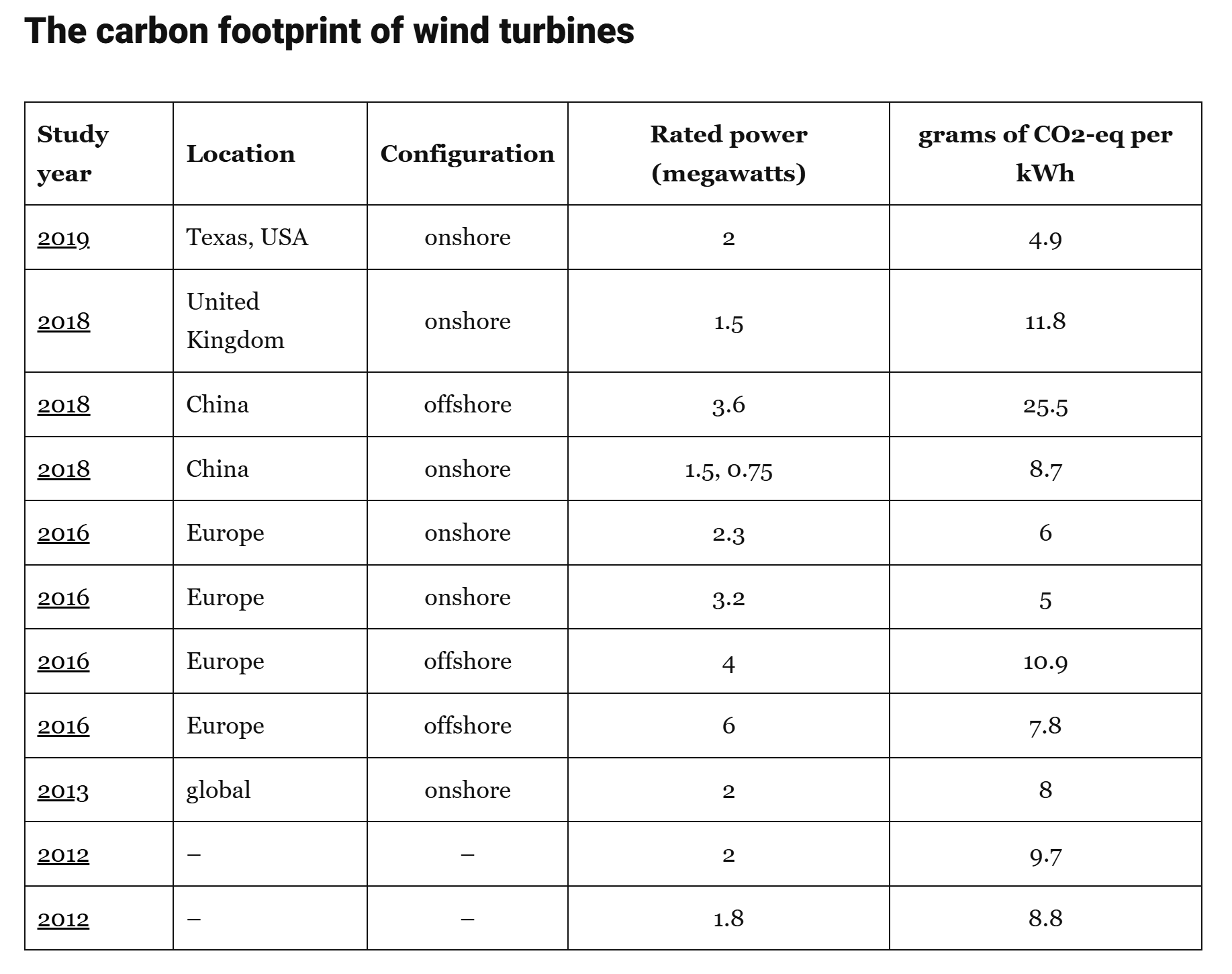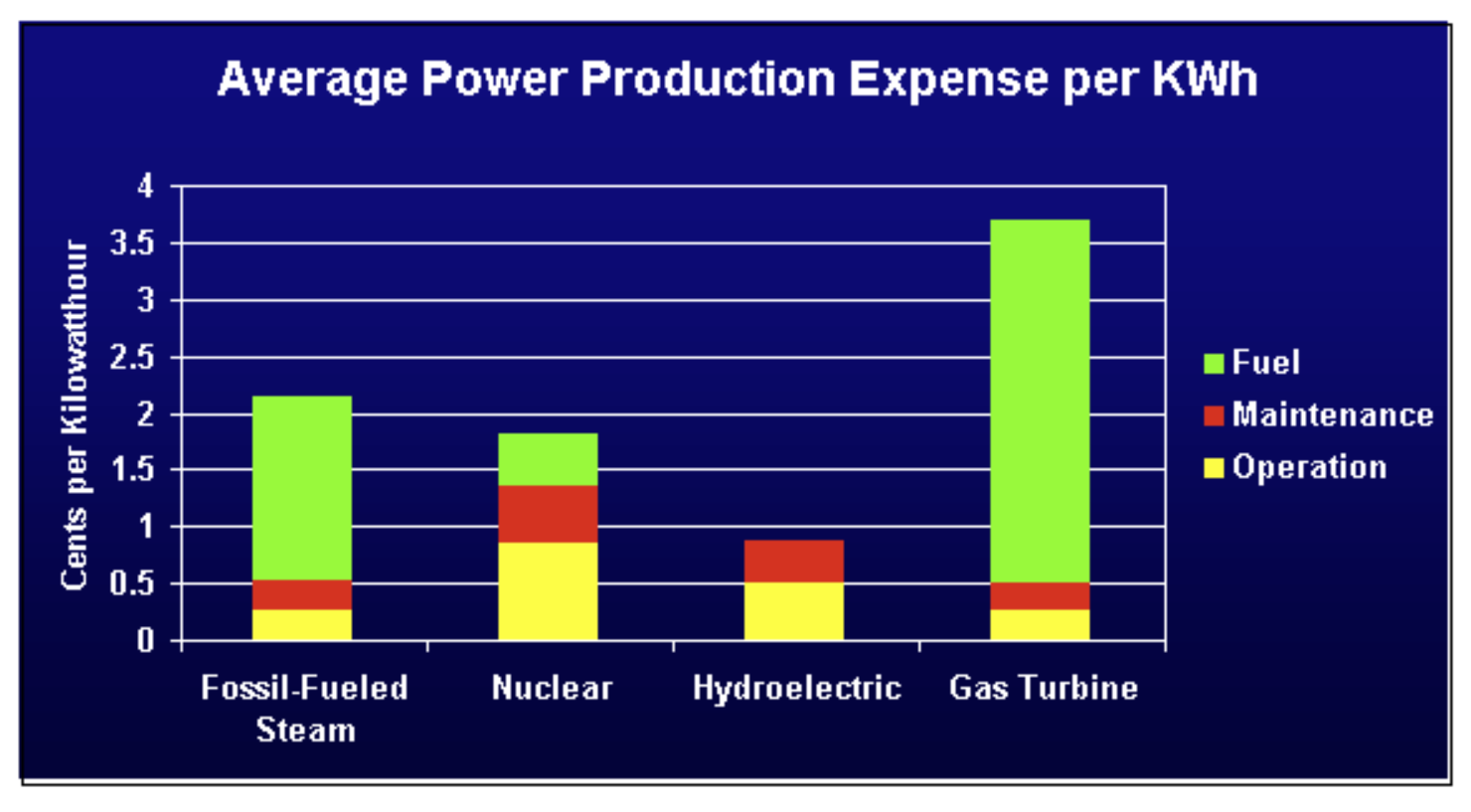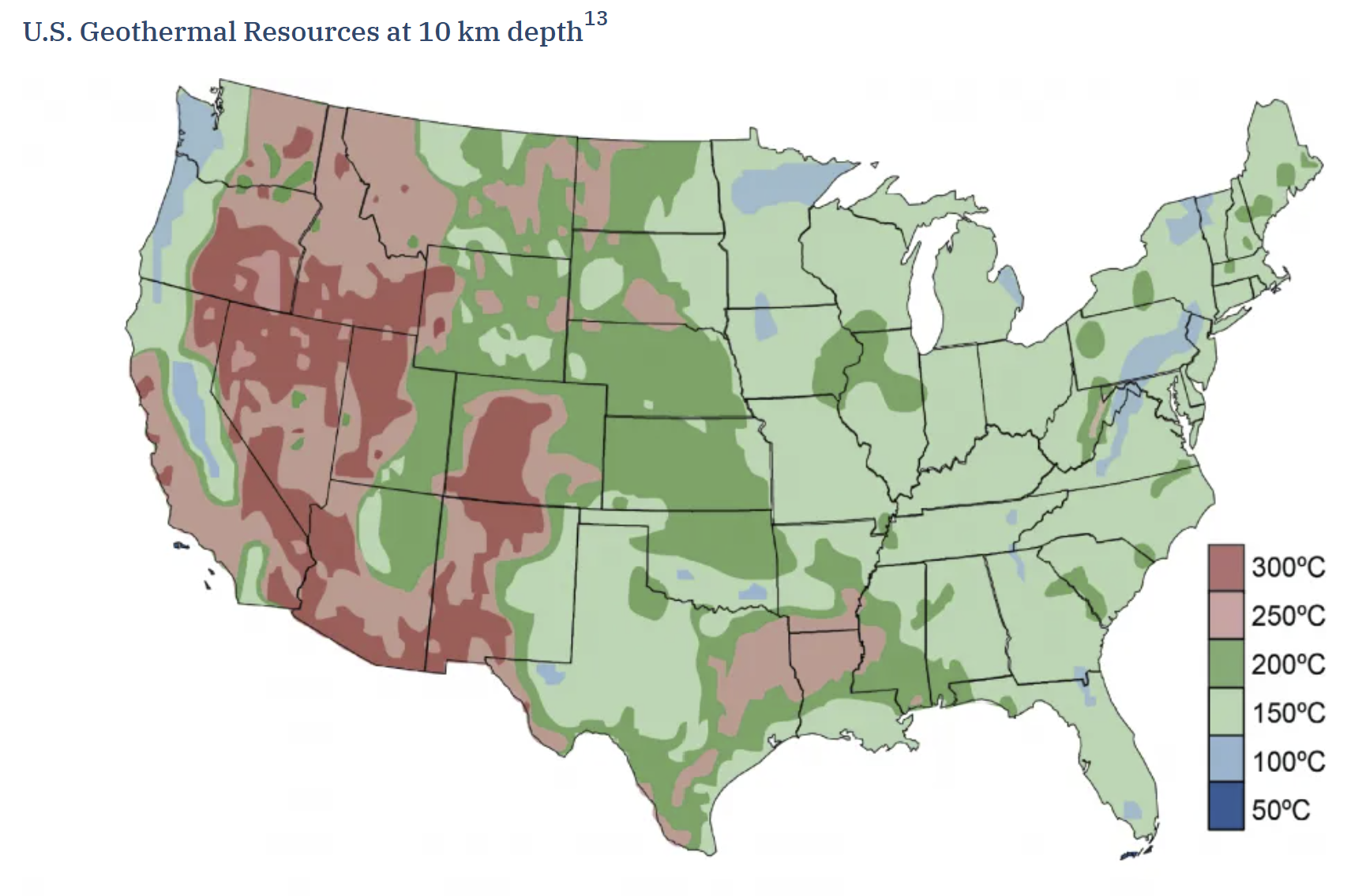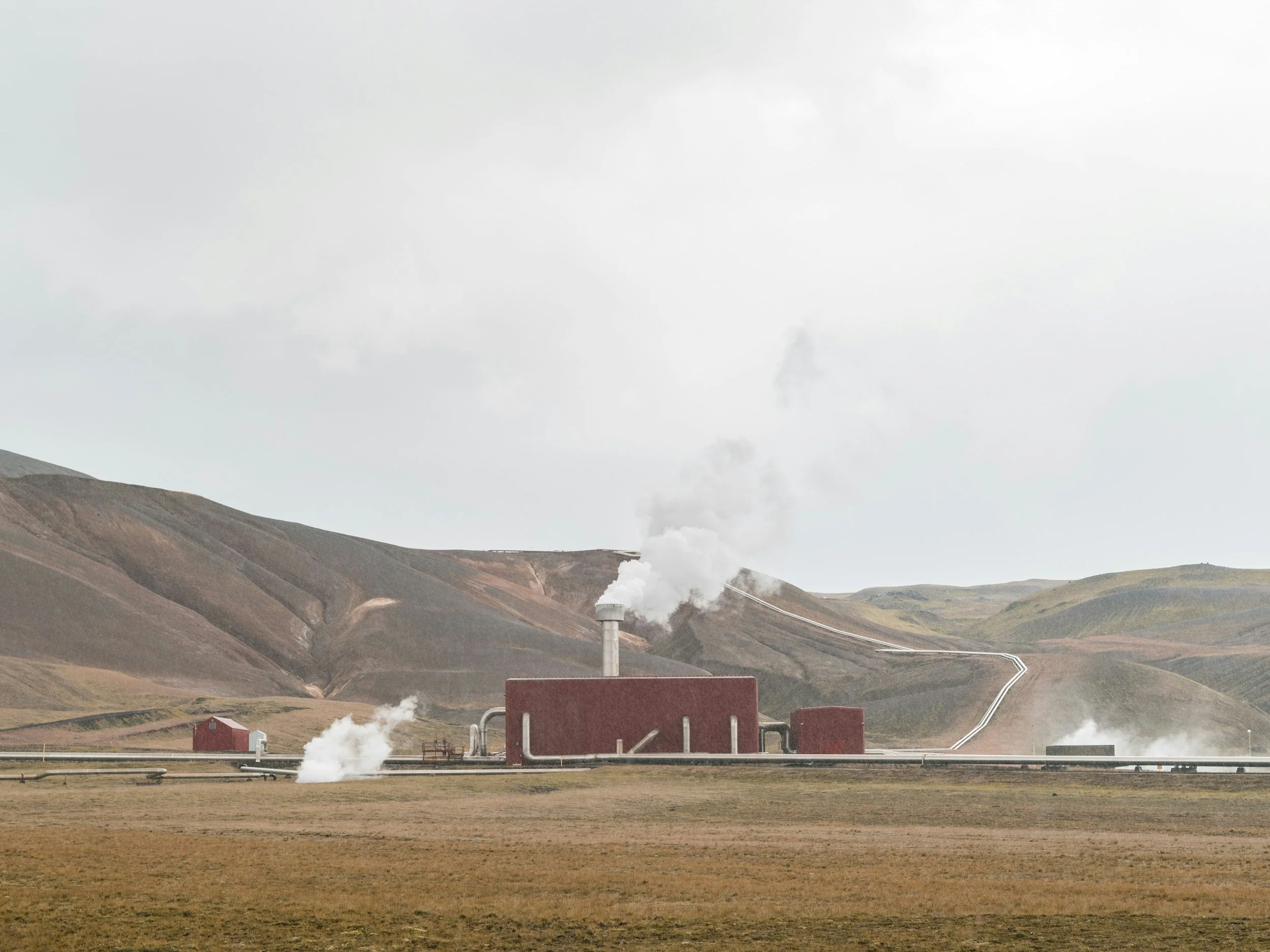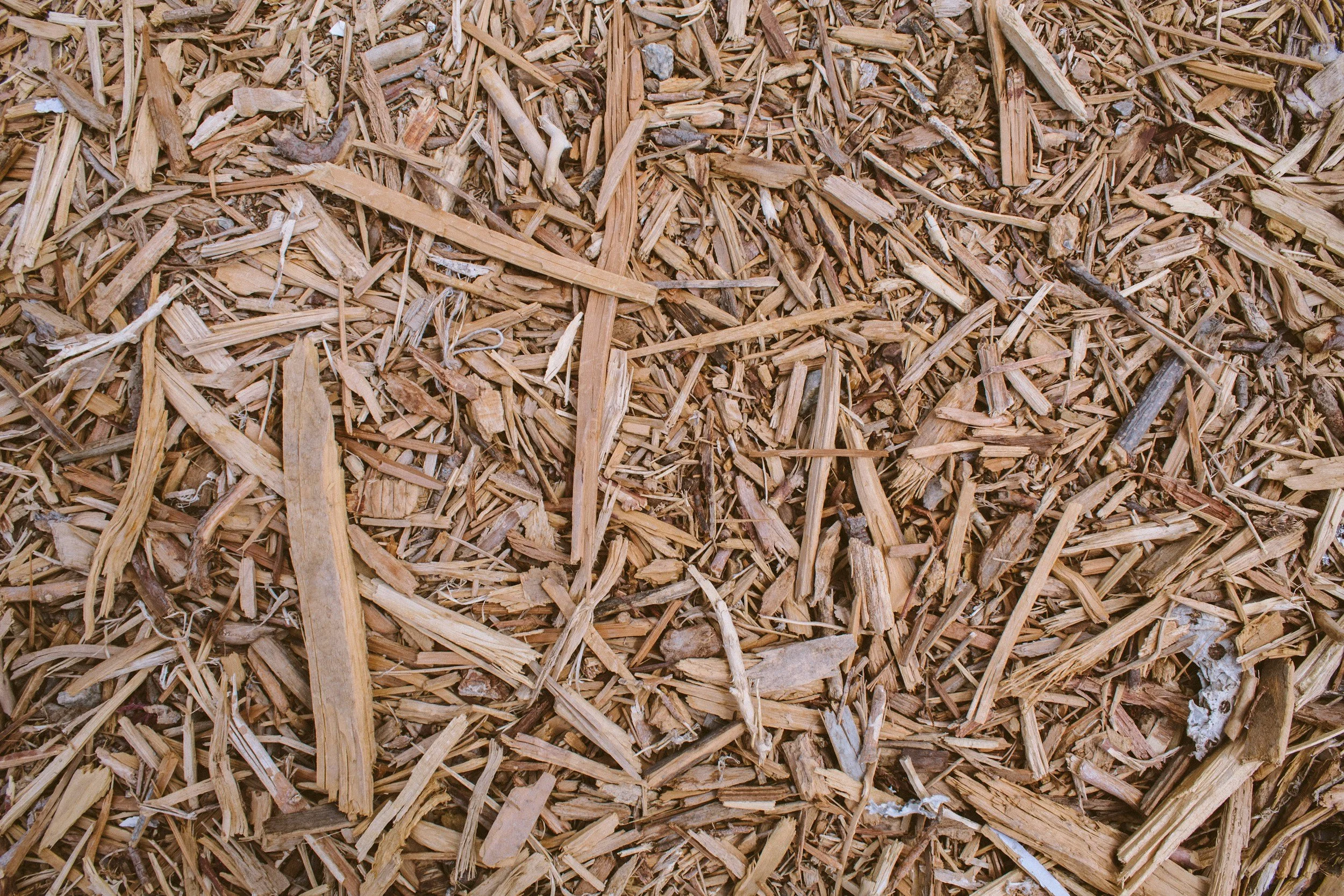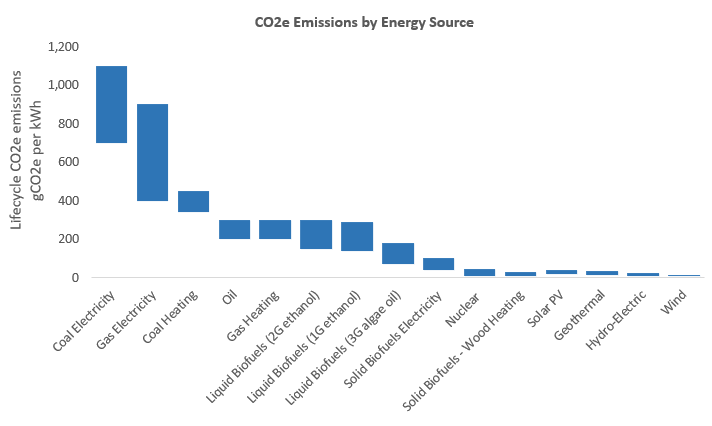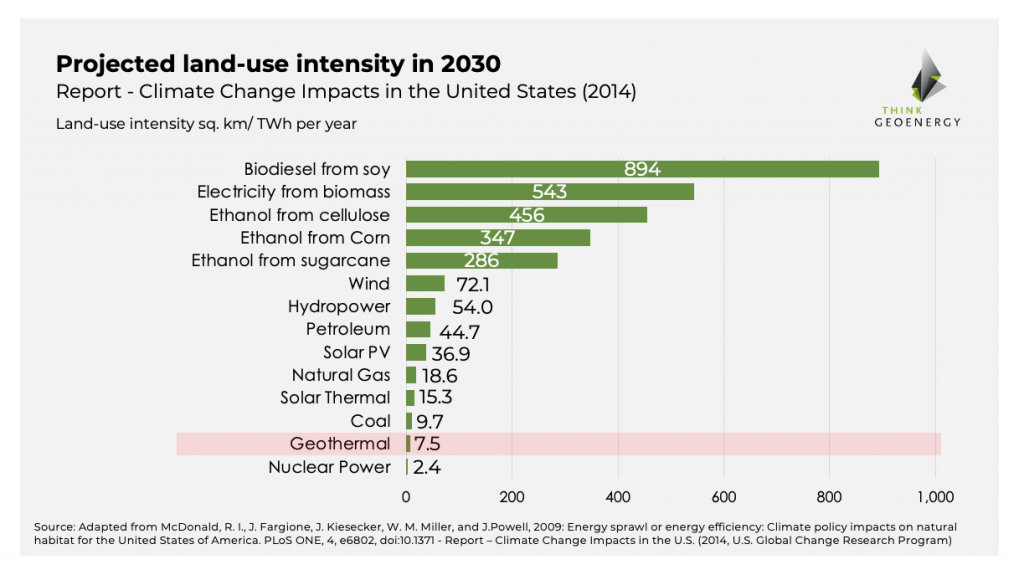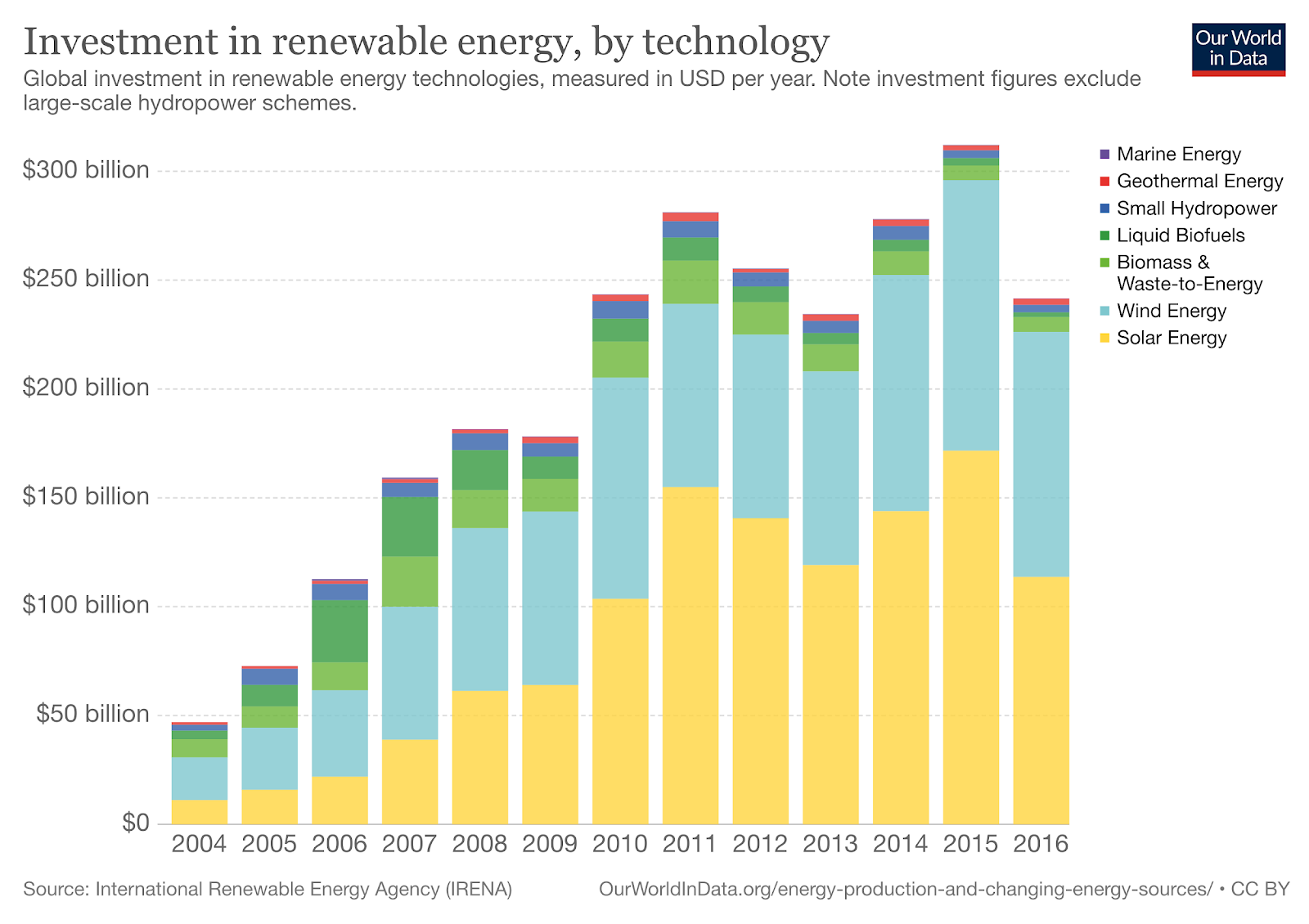Which Form of Green Energy is the Best? Let’s Compare Them Head-to-Head
I recently did a FULL deep dive into nuclear energy, the myths behind it, and if it’s a plausible solution for climate change and the energy needs of the future. Check it out here!
But I just barely touched on other forms of green energy in that video so let’s cover them all today. Which form of green energy is the best?
We will review them on a few categories:
Efficiency: how much energy does it produce?
Carbon footprint
Land use
Cost to build
Safety
Recycling
Ecosystem impact
Most of these numbers will be for the US. I want to keep comparisons the same, as well as I am an American, so I want to know what affects me. I suggest looking up your country’s equivalent to the Department of Energy to see the stats for yours!
To include nuclear energy in this conversation, we must be clear that these are forms of green energy. If we were to call these renewable energy sources, nuclear must be excluded, as it will run out eventually.
This is just going to be a surface level of all of these types of energy for the sake of time. Let me know if you’d like to see a full deep dive into any of them. Again, the nuclear deep dive is here.
Lastly, we will go over some charts at the end that compare them all head-to-head to see which one comes out on top. But first, some basic information about each type.
Wind
What is wind energy?
Here’s what I got from the US Department of Energy: “It involves using wind turbines to convert the turning motion of blades, pushed by moving air (kinetic energy) into electrical energy (electricity). This requires certain technologies, such as a generator that sits at the top of a tower, behind the blades, in the head (nacelle) of a wind turbine.”
How do we get electricity? Wind spins the blades on top, and that turning motion then spins a generator in the head of the turbine. The generator then produces electricity, which is able to move through cables and into our homes.
This is not a windmill, however. A windmill does exactly that: it mills. It used the wind to turn a grindstone to grind various grains. A wind turbine uses wind to spin a turbine to get energy.
How much energy does it produce?
Wind energy is currently deployed in all 50 US States and provides the US with 10% of its energy, according to the Department of Energy.
A typical 2.8-megawatt (MW) utility-scale wind turbine could produce enough electricity to power just under 1,000 American homes (with 1 gigawatt being several utility-scale turbines). And wind turbines are growing taller; the bigger, the more energy they may be able to produce. New designs for blades help wind turbines generate more power and address other issues, such as material use, recyclability, or noise.
According to the EPA, “wind turbines are 20% to 40% efficient at converting wind into energy.” This variation is due to how much wind there is. But that does not make it unreliable. Thanks for storage devices, their power output is steady.
What is the carbon footprint?
Let’s compare each of our sources today with these same stats from Yale Climate Connections numbers for natural gas and coal to keep it consistent:
Natural gas = 437 to 758 grams of CO2-equivalent (includes other pollutants such as methane) per kilowatt hour
Coal = 675 to 1689 grams of CO2 per kilowatt-hour
As for wind, here is a chart to show a few options from different countries and onshore vs offshore. Something to note is that offshore wind has nearly double the footprint of onshore wind. That’s because it is double the size. If this is a topic you’re interested in hearing more about, let me know!
But for US numbers, let’s use the top of the chart from Texas. Wind energy produces a whopping 4.9 grams of CO2-equivalent per kilowatt hour. Yes, this does include the turbine’s entire lifecycle. The most harmful part of this lifecycle is the creation and transportation of the parts. Once it’s up and running, it’s nearly a footprint of 0.
Land use of wind energy
As with any form of green energy, none of them are placed willy-nilly. They are placed in advantageous areas. For wind, that means they will be placed in areas with consistent and/or high winds. Scientists and researchers also study animals to ensure their safety when they are placed.
While it does take a lot of land to disperse turbines, the land between them is totally fine to use. It’s most often used for farming or kept wild to preserve the ecosystems.
Our World of Energy states that most estimates are around 2 to 40 acres per megawatt of capacity. Meaning that if the turbine is capable of 10 megawatts, it would need around 20 to 400 acres. That is a hypothetical number; I just wanted to put that unit of measurement into perspective.
But, again, the actual radius of operation for the turbine is quite small; it doesn’t need the entire 40 acres.
Cost to build/operate
The EPA estimates wind turbines can currently last 20 years. Though with proper research and development, they could last longer in the future. They also require regular maintenance every 6 months.
The American Nuclear Society estimates each turbine costs around $3.5 million, while Today’s Homeowner estimates around $2-4.5 million per turbine. Let’s just use that as a window. Most scientific estimates are only given in cost per kilowatt-hour, and I don’t know how that converts.
But, the US Energy Information Administration provides us with this chart, which shows that energy efficiency since 2013 has gone up at least 74% but prices to create wind turbines have gone down by 27%. Sounds like a win to me!
Here’s another chart from the Decarbonization Channel that demonstrates how much cheaper onshore wind is compared to any other form of energy, including fossil fuels. Onshore is the cheapest, with offshore being roughly in the middle. This is based on the “Levelized cost of electricity (LCOE) is a metric used to assess the cost of generating electricity from a specific power source over its lifetime.
The measure takes into account all of the costs associated with building, operating, and maintaining a power plant, as well as the amount of electricity the plant is expected to produce over its lifetime.”
Cost for consumers
Now, how is the cost determined for us? It’s kind of arbitrary and based on your region and how much the company wants to charge. So, I guess this won’t be a criterion we judge on after all.
As for the cost of wind (and solar, which we will get to next), Trump just ended any incentives for solar and wind energy on July 4, 2025. This means that costs for solar and wind are going to increase as this administration remains in fossil fuel-hungry power. These rates are expected to rise 30-300% across the US. So much for Trump caring about lowering costs.
Safety
The turbines themselves are very safe, and there is no indication that if a turbine goes up next to your house that you will face adverse health effects. The same cannot be said of an oil drilling project, for example.
Though at this time, we do have to use fossil fuels to create the turbines, which contributes to its carbon footprint and therefore the health and safety of humans and the planet.
As for the workers, they do have to worry about falls, shocks, burns, and working with heavy equipment.
Recycling
Good news: recycling saves companies a lot of money. So it’s in their best interest to manufacture all tech to be recycled. National Grid states that in theory, 96% of the wind turbine can be recycled as it is made of 96% recyclable materials. As they grow in popularity, so does the popularity of using recycled materials in manufacturing and the incentives to recycle them at the end of their 20-ish year lifespan.
Ecosystem Impact
People like Trump claim that wind turbines are bird graveyards, kill whales, and even *checks notes* cause people to buy less bacon? So what is the ecological impact of wind turbines?
First, since it has the lowest carbon footprint of all green energy, it saves animal lives by not polluting their homes. Of course, with anything on the planet, it does have the possibility to harm animals. Cars do it, clear windows do it, and so forth. Wind turbines are not exempt.
First, sites are screened for animal use via satellite and recorded data of the area. Then, scientists monitor the proposed area in real time to see how it looks against historical data. They often cease construction if animals, especially protected species, are present. Once the turbines are up and running, continuous monitoring takes place, deterrents like ultrasonic sounds are played to keep animals away from the blades, and during peak bird migration, blade speeds can be lowered to reduce impact risk.
They are estimated to kill 100,000 to 700,000 birds per year, but this is still less than the estimated 4 billion birds killed from other things like buildings, cars, and even house cats. Climate Portal states that, “A 2012 study found that wind projects kill 0.269 birds per gigawatt-hour of electricity produced, compared to 5.18 birds killed per gigawatt-hour of electricity from fossil fuel projects.”
Thankfully, NOAA states that “at this point, there is no scientific evidence that noise resulting from offshore wind site characterization surveys could potentially cause whale deaths. There are no known links between large whale deaths and ongoing offshore wind activities.” Maybe this is why Trump hates NOAA so much…
Image from Squarespace
Solar
How does solar work?
According to National Grid, “Solar panels are usually made from silicon, or another semiconductor material, installed in a metal panel frame with a glass casing. When this material is exposed to photons of sunlight (very small packets of energy), it releases electrons and produces an electric charge.
This photovoltaic (PV) charge creates an electric current (specifically, direct current or DC), which is captured by the wiring in solar panels. This DC electricity is then converted to alternating current (AC) by an inverter. AC is the type of electrical current used when you plug appliances into normal wall sockets.”
Efficiency
The Center for Sustainable Systems estimates that, currently, solar panels are a pretty consistent 21% effective, but researchers are actively working on solar panels that can reach a consistent 40% effective rate. Of course, this, too, hinges on this current administration and their attacks on green energy. Will this research continue? I’m not sure.
But what about when the sun is not shining? Well, first, solar panels are placed in sunny spots in the same way wind turbines are placed in windy spots. Though they won’t perform at their peak, solar panels still work and still generate electricity when there is shade, clouds, or precipitation.
But there is always night. What then? That’s where storage batteries come into play, just like wind turbines. During excess sunlight, the panels can harness as much energy as they can and store excess energy in batteries for future use. This is how you can still use 100% solar energy even at night.
Carbon footprint
According to Infolink, “from coal-fired power plants, the average lifecycle emissions are 820 g CO2e/kWh. Meanwhile, gas combined cycle plants release 490 g CO2e/kWh, and utility-scale solar PV systems only 33-50 g CO2e/kWh.”
Why is it so much higher than wind when they’re so much smaller? Well, manufacturing polysilicon, metal, and glass is extremely resource-intensive, requiring temperatures of 1400-2000 degrees Celsius.
Land use
Currently, solar takes up less than 0.5% of land use in the US. Even county-by-county, it usually still equates to less than 1% per county. Yes, even in agricultural areas. Here’s a more precise chart.
A conservative estimate for the footprint of solar development is that it takes 10 acres to produce one megawatt (MW) of electricity.
A main concern with solar is that it takes up farmland. Yes, it might, but proper surveying of different types of farmlands can ensure solar panels can be placed OVERTOP of farms and the land can be used for both uses. This is mostly going to be grassland and pastureland. Since solar panels are tall enough, livestock can easily walk underneath, continue to graze, and even have a shady spot to rest under. This is becoming more and more popular and helps alleviate some of that usual solar stigma.
Cost to build
Depending on the company, the size of land, and things like that, you may get some different estimates, but here is the estimate from Genie Solar Energy: $12.5 million per 5 megawatt solar farm.
Sound expensive? It’s gone down drastically since 2013. Solar used to be the most expensive, no doubt, but it is now a closer competition to onshore wind and natural gas, according to these charts from the US Energy Information Administration. But it’s still quite expensive. Again, this comes down to the materials used to make solar panels and the energy-intensive creation.
Safety
The only real concern with solar panels for you, animals, and maintenance workers is that they can get hot in the sun, so don’t touch them or wear PPE. Other than that, they’re quite harmless. It’s not even that common to have accidents while working on them (with only 1 estimated death every 50 years), making them the safest form of green energy!
Recycling
Good news, about 75% of a solar panel is just plain ole glass, making it very easy to recycle and commonly accepted as well. Aluminum frames and stands are also easy to recycle, but other components, not so much. These other materials are highly valuable, it’s just not as common to recycle them. Recycling is done in the US, just not at large scale. The EPA provides more information on this process, as well as information on how you can recycle some if you do your own solar.
Other options include reusing on a smaller scale, such as using old panels to charge EVs or electric bikes.
Ecosystem Impact
I can’t say I’ve heard Trump rant about solar, but maybe there’s something sinister going on? As with wind, we have to acknowledge that fossil fuels kill people, plants, and animals every day. So these are all going to be safer compared to that.
They do take up a large bit of land, but since they are stationary, they pose less of a risk than wind turbines. Not to mention, in desert regions, they can even provide shade to allow animals to rest and spots for new plant life to take form.
The main issue is with solar power towers. These concentrate light, allowing more light to hit panels below. These can cause serious burn injury or even death to birds. It is an estimated few thousand every year, which is far less than wind turbines, but it should not be overlooked. The same could be said for regular panels if they get too hot, too.
Hydro
How does it work?
Energy Saving Trust puts it very simply:
“Flowing water passes through a narrow tunnel called a penstock. This turns the water's potential energy into kinetic energy. Water rushes through a turbine, causing it to spin. The turbine powers a generator to produce electricity.”
Efficiency
Worldwide, about 20% of energy comes from hydro, and in the US, it’s about 10%. But the US is the #2 producer of hydro in the world. We just export a lot of it. But based on the total production, it is “enough electricity to serve the needs of 28 million residential customers. This is equal to all the homes in Wisconsin, Michigan, Minnesota, Indiana, Iowa, Ohio, Missouri, Nebraska, Kansas, North and South Dakota, Kentucky, and Tennessee.”
And to top it all off, “ Modern hydro turbines can convert as much as 90% of the available energy into electricity.”
But a lot of hydro plants are located in the West, a region riddled with climate change-induced drought, which has lowered output by 4.2% in the first half of this decade.
Carbon footprint
According to the Wisconsin Valley Improvement Company, “only 2,400 of the nation's 80,000 existing dams are used to generate power. Installing turbines in existing dams presents a promising and cost-effective power source. However, in the last 10 years, the Department of Energy has spent $1.2 billion on research and development for other renewable sources like wind, solar, and geothermal, but only $10 million on hydropower.”
I think this is a good starting point. I don’t think we should be building more dams. If you want a future video on that, let me know. Dams are very destructive to the environment and ecosystems…more on that later. So we might as well convert the dams we currently have to house turbines, versus creating new dams.
Hydropower.org states that “Independent research suggests that use of hydropower instead of fossil fuels for electricity generation has helped to avoid more than 100 billion tonnes of carbon dioxide in the past 50 years alone. That’s roughly equivalent to the total annual carbon footprint of the United States for 20 years.”
The IPCC states that hydropower has a median greenhouse gas (GHG) emission intensity of 24 gCO₂-eq/kWh. This is just lower than solar and just a bit higher than onshore wind.
Land use
The dam takes up space, yes, and it also floods entire regions. According to Freeing Energy, “using data from all the hydropower plants across the US, we calculate that it takes 0.265 acres of land to generate a megawatt hour of electricity.” More on this later.
Cost to build
I truly could not find a solid number for how much it costs. But, the Energy Technology Systems Analysis Programme states that “hydropower plants range from $1750/kW e to $6250/kW e and are very site-sensitive.” So, it depends on the size of the site.
As for the price of production, the Wisconsin Valley Improvement Company estimates that, “in the U.S., hydropower is produced for an average of 0.85 cents per kilowatt-hour (kWh). This is about 50% the cost of nuclear, 40% the cost of fossil fuel, and 25% the cost of using natural gas.
Safety
I’m just gunna keep reiterating that any form of green energy is leaps and bounds better than fossil fuels in terms of safety. But…hydro is a bit dangerous compared to the forms we’ve already covered. At least, for people. Our World in Data estimates 1 human death every single year for hydroelectricity. This could be workers or recreation accidents. This also depends on the type of dam and any safety measures they have in place, such as buoys, ropes, and other guardrails.
Recycling
Of course, the main component here, water, can be recycled over and over again. When it passes through a turbine, it’s literally just passing through. It does not turn to steam, and it is not used up.
There’s not nearly as much tech involved with hydro as we had with solar and wind so there isn’t as much info out there on if these components can be recycled and how often they are. In theory, any piece of tech can be recycled. But hydroelectric plants can survive 50-100 years, one of the longest lifespans on this list. So recycling for these components is rare for that reason.
Ecosystem Impact
Bringing it back to safety, but for animals, fish, and other aquatic animals could be subject to harm should they go through a turbine. I was hoping it was not that common, but about 22% of fish and 60% of eels that go through turbines are killed.
As I hinted at, dams really wreak havoc on local ecosystems. This topic needs its own video (if there’s interest), but here are a few noteworthy changes to the environment that dams create, regardless of whether they’re used for hydro or not:
Salmon migrate upriver to spawn and die. They cannot reach ancestral spawning grounds due to dams. Thankfully, fish ladders and cannons (yes, I’m serious) are becoming more popular to help fish move upstream. They can navigate downstream just fine
New dam construction means that rivers need to be flooded. This destroys river habitat. Many animals, again, like Salmon, need river habitat to spawn, not a lake. Since Salmon are a keystone species, this impacts the entire food chain.
Impacts of water quality are also present with this now-stagnant water, that is also more often used for recreation. From toxic algae to more human-made pollutants in the water, this can be a mess for water quality. This also changes the temperature of the water, which affects many species.
Nuclear
For the sake of time and so that I’m not too redundant, please check out the full video on nuclear energy and then come back to finish this post. We covered all of this in that video!
Image from Squarespace
Geothermal
How does it work?
From the US Department of Energy, “Geothermal energy is heat energy from the earth. Geothermal resources are reservoirs of hot water that exist or are human-made at varying temperatures and depths below the earth's surface.”
This works for heating and cooling. The DOE again states, “Geothermal heat pumps, or GHPs, use the constant temperature of the shallow earth (40–70°F) to provide heating and cooling solutions to buildings wherever the ground can be cost-effectively accessed to depths below seasonal temperature variations.”
So, yes, it can only be used effectively where this can be tapped into in the ground. This cannot be used everywhere but we see a similar story with any other form of green energy as well.
Efficiency
Now, geothermal energy is usually not the sole source of energy for a home. We had it growing up, and it was just to supplement our regular (likely fossil fuel-based) energy usage. The Province of Manitoba states that it, “operates more efficiently than conventional heating and air conditioning systems. Annual energy savings for homeowners can be reduced from 30 to 70% in heating mode and 20 to 50% in the cooling mode compared to conventional systems.”
Plus, they still require energy to pump the heat into your home. So it really is a great solution to reduce our reliance on fossil fuels, but this is not a fully fossil-free method of energy conservation. I would call it that: energy conservation, not necessarily green energy.
This only accounted for 0.4% of all electricity generation in the US in 2022.
Carbon footprint
That being said, “Geothermal power plants emit 97% less acid rain-causing sulfur compounds and about 99% less carbon dioxide than fossil fuel power plants of similar size,” according to the US Energy Information Administration.
For a more precise number, I found this study that states, “the best estimate for a global average CO2 emission factor from geothermal plants is 122 g/kWh from Bertani and Thain (2002).”
From our numbers in the beginning of this post, it far outcompetes natural gas and coal, but that is quite a bit higher than other forms of green energy.
Image from Squarespace
Land use
According to the US Department of Energy, “geothermal power plants use less land per gigawatt-hour (404 m2) than comparable-capacity coal (3,642 m2), wind (1,335 m2), and solar photovoltaic (PV) power stations (3,237 m2).”
They don’t state it, but I assume that it must take up more land space than wind and hydro since they are not mentioned. But, that also makes sense. Those two, as we covered, don’t require a ton of land.
Cost to build
According to the Center for Sustainable Systems at the University of Michigan, “capital costs for conventional geothermal power plants in the U.S. are approximately $2,500 per installed kW capacity.”
As for the consumer, in 2016, geothermal electricity cost between 7.8-22.5¢ per kWh.
Safety
As with other forms of energy that are hot, geothermal also has the potential for heat injury when it comes to maintenance workers and those who do installation. As well as, this is not yet 100% fossil fuel-free. You still need fossil fuels (or another form of green energy like solar) to pump the heat from the ground and into your home. This can still contribute to carbon emissions, though, of course, much lower than using 100% fossil fuels.
Enbridge also states that drilling in certain areas may increase earthquake risk. So energy companies must employ geologists and surveyors to ensure safe drilling practices.
Recycling
Not only do we need to talk about equipment here, but also the by-product of drilling. Some of this can be recycled but some of it cannot. It’s the same environmental impact of drilling for oil and this can further lead to pollution of soil, air, and water.
Other than that, I really couldn’t find much information about the end of life of geothermal equipment. I can assume they repair and recycle as much as they can, simply because this is the cheapest option. Metal and tech are highly valuable to recycle so it would be dumb of these companies NOT to recycle. But without a solid answer, this is just my best guess.
Ecosystem Impact
This mining also impacts the local wildlife. The US Fish and Wildlife Service states that, “Steam vented at the surface may contain hydrogen sulfide, ammonia, methane, and carbon dioxide. Dissolved solids discharged from geothermal systems include sulfur, chlorides, silica compounds, vanadium, arsenic, mercury, nickel, and other toxic heavy metals. All of these releases, if concentrated, can create localized fish and wildlife kills.” Of course, these are bad for our own health, too. These heavy metals can get into our soil, water, and air.
Though, there is some good news: “Geothermal resource development is often highly centralized, so reducing its environmental impacts to an acceptable level is achievable.” What concerns me here is environmental racism. The practice of polluting regions where people of color live. Keep an eye out for that and learn more about environmental racism here.
Another ecosystem impact is water use. “Most geothermal power plants require a large amount of water for cooling or other purposes. This need could raise conflicts with other users or uses such as fish spawning and rearing in areas where water is in short supply.”
Image from Squarespace
Biomass
How does it work?
The US Energy Information Administration states that “biomass is renewable organic material that comes from plants and animals. Biomass can be burned directly for heat or converted to liquid and gaseous fuels through various processes.” This is burning wood in your wood stove to heat your home, using methane from food waste, and things like that. This was how humans originally made heat and energy. It was the most common energy source through the mid-1800s, but now it only accounts for about 5% of our energy use in the US.
Efficiency
Napier Grass states that efficiency is about 70-90% with modern systems. This means boilers and stoves in our homes, but also power plants.
Carbon footprint
Unfortunately, burning stuff creates pollution whether you’re burning fossil fuels or natural materials. The US Energy Information Administration tells us that “wood smoke contains harmful pollutants such as carbon monoxide and particulate matter. Modern wood-burning stoves, pellet stoves, and fireplace inserts can reduce particulates released from burning wood.”
Similarly, the National Renewable Energy Laboratory states that:
“Burning biomass releases about the same amount of carbon dioxide as burning fossil fuels. However, fossil fuels release carbon dioxide captured by photosynthesis millions of years ago—an essentially "new" greenhouse gas. Biomass, on the other hand, releases carbon dioxide that is largely balanced by the carbon dioxide captured in its own growth. However, studies have found that clearing forests to grow biomass results in a carbon penalty that takes decades to recoup, so it is best if biomass is grown on previously cleared land, such as under-utilized farmland.”
But other biomass energy sources include capturing methane from landfills and creating biofuels. These topics need their own in-depth conversations another day, but these are great ways to create green energy while also solving other problems, such as methane emissions and food waste.
While I couldn’t get a solid number for its carbon footprint, we can tell it’s not that great.
Image from Squarespace
Land use
This really comes down to what is being burned. Are trees being grown specifically to be cut down and burned? That’s a lot of land use. But if trees that are already knocked down, say in a storm, are being recovered and burnt instead of being sent to the landfill, that’s technically no extra land use.
Here is a full study published on Science Direct that outlines the pros and cons to biomass land usage and how we can do this sustainably if this becomes a solution for fossil fuels.
Cost to build
The US Department of Energy estimates that "Biomass heating plants have installed costs that typically average between $500 to $1500 per kW-thermal of installed heating rate capacity.”
Safety
In terms of air pollution, not really. It can still release CO2 emissions and particulate matter and lead to smog and respiratory illnesses. Of course, measures can be implemented to decrease this, but this is still something to consider. Some estimates say that it pollutes as much as fossil fuels.
Harvard states that there is an increase of asthma, heart attacks, respiratory disease, birth defects, and neurodegeneration in areas that use primarily biomass energy. This is also similar to the outcomes of fossil fuel.
Recycling
While there isn’t a whole lot of info out there about recycling components once these facilities are at the end of their lives, something we need to lean into here is recycling biomass. What I mean is stop planting trees for the sole purpose of burning them. Instead, let’s burn downed trees; let’s take forest fire prevention matters, and burn forest fuels; let’s burn our food waste; let’s burn our paper that can’t be recycled, you get the idea.
Ecosystem Impact
We’ve talked enough about emissions for this fuel, so let’s focus on the broader environment. When planting trees as a crop, this decimates the forest ecosystem. Oftentimes, only one species of tree is planted, which eliminates biodiversity among trees, which trickles down. This will decrease the biodiversity of mosses and shrubs and flowers, and therefore fungi, animals, insects, and more. And then when the trees are cut down, now this already limited forest environment is left with nothing remaining. Clear-cutting impacts soil health and water health in the region and can lead to mudslides.
Image from Squarespace
Totals across the board
Alright, let’s compare them all head-to-head with some handy charts that do a better job of explaining this than I could. Keep in mind, there are varying numbers for each of these topics depending on who you ask. Feel free to cross-reference other studies.
I’m going to score them so we can get a final score at the end: first place is 9 points, and ninth place will be 1 point. Didn’t we just cover 6 sources of energy? Yes. But let’s throw the 3 main types of fossil fuels in here to see how they rank.
I discuss natural gas in-depth in this video, in which I state that it is the best fossil fuel. That is shown in these charts. But that does not make it GOOD. You’ll see how it compares to green energy below.
Efficiency
The Wall Street Journal puts wind energy on top. But, for this energy capacity, the DOE puts nuclear on top. Though this second chart does not include biomass. For ranking purposes, I’m going to use the WSG.
Our total ranking is:
Wind - 9
Geothermal - 8
Hydro - 7
Nuclear - 6
Solar - 5
Biomass - 4
Natural Gas - 3
Oil - 2
Coal - 1
I believe what this is saying is that this is how much of the grid these sources could cover
Carbon footprint
Wind is the winner! Yes, this includes the entire lifecycle of a wind turbine.
Wind - 9
Hydro - 8
Geothermal - 7
Solar - 6
Nuclear - 5
Biomass - 4
Natural Gas - 3
Oil - 2
Coal - 1
Land use
Nuclear comes out on top on pretty much any study for lack of land use that it requires. Unfortunately, fossil fuels are not far behind. Other forms of green energy are quite land-intensive!
Nuclear - 9
Geothermal - 8
Coal - 7
Solar - 6
Natural Gas - 5
Oil - 4
Hydro - 3
Wind - 2
Biomass - 1 (it is by FAR the worst in this category)
Cost to build
Wind wins on cost, and solar is not too far behind it. Oil does not appear on any chart so it will just go in last place here.
Wind - 9
Solar - 8
Natural Gas - 7
Hydro - 6
Geothermal - 5
Coal - 4
Nuclear - 3
Biomass - 2
Oil - 1
Safety
According to Our World in Data, solar is the safest, followed very closely by nuclear energy. This accounts for accidents and pollution. I could not find a single chart with geothermal on it, so to keep it consistent with the last category, I’ll be putting it in last place
Solar - 9
Nuclear - 8
Wind - 7
Hydro - 6
Biomass - 5
Natural Gas - 4
Oil - 3
Coal - 2
Geothermal - 1
Recycling
This one is hard to compare across charts and graphs as this varies heavily by region, company, and other factors, so we will skip this one.
Ecosystem Impact
Sorry, but this is another one that is hard to quantify on a chart since it is so dependent on the particular region and how thoughtful a company or crew is to mitigate ecosystem impact. Not to mention, they all have their unique downsides. We will skip this one as well.
Totals
(My prediction is wind, nuclear, hydro, solar, geothermal, natural gas, oil, biomass, coal)
Wind - 36/45 (I feel this also gets bonus points for our unscored categories as components are highly recyclable and it has little impact on humans and wildlife in terms of ecology and daily life)
Solar - 34/45 (I initially predicted it in 2nd and changed my mind, my gut was right!)
Nuclear - 31/45
Hydro - 30/45
Geothermal - 29/45 (keep in mind, it did not get ranked for safety due to lack of data. But my instinct tells me that it’s rather safe, so it could surpass hydro and even nuclear. That being said, we know that it is not a perfect green energy solution).
Natural Gas - 22/45
Biomass - 16/45
Coal - 15/45 (this surprised me that it beat oil!!)
Oil - 12/45
The only category in which fossil fuels take the cake in is land use and cost. And the cost is heavily due to subsidies. If we funded and subsidized green energy as much as we did fossil fuels, we could lower their costs, too!
For now, enjoy one more chart all about how much the world has invested this century in green energy and what those preferred sources of energy are.
All that learned, what is your preferred form of green energy after this post?
Thanks for bearing with me in this long, yet surface-level, post. If you want me to deep dive into any of these, in particular, what it might mean for individuals to implement them in our own homes, let me know! I know this was brief about each one, but that was for the sake of time. Let me know what you want to see next, and drop your energy questions below!
For now, check out this video all about green energy myths!
Thanks for reading along, as always, remember that your small actions make a big difference in the long run :)
Emma



